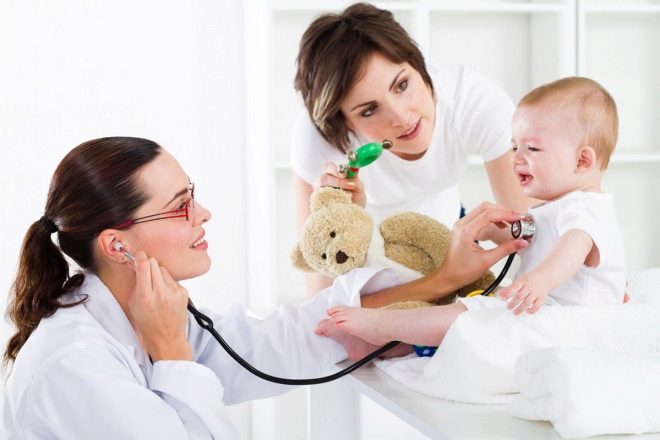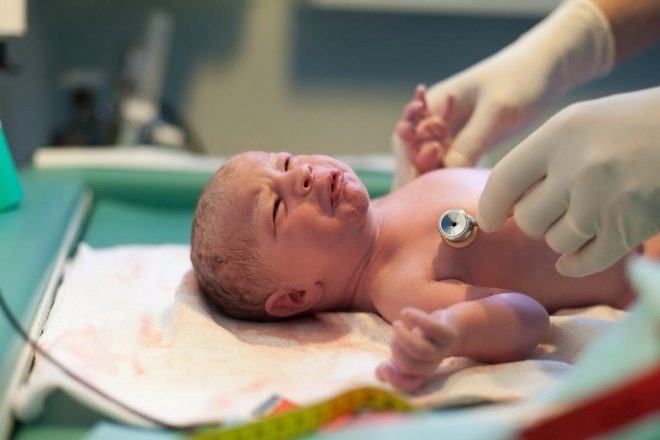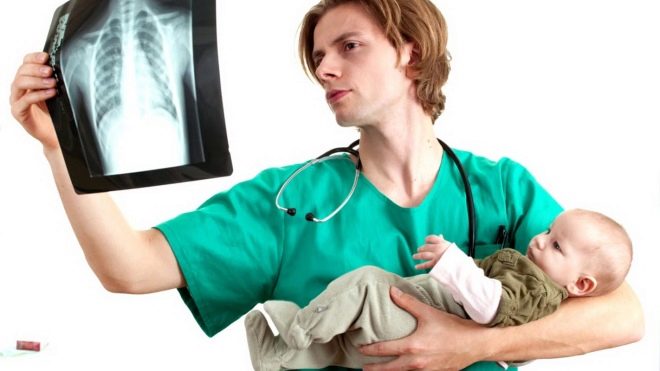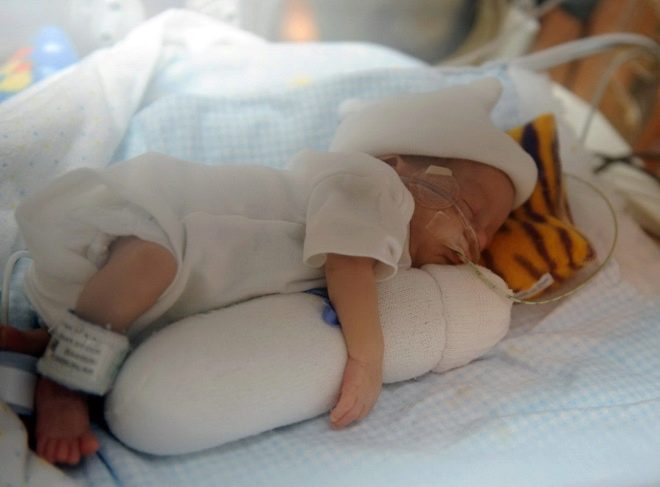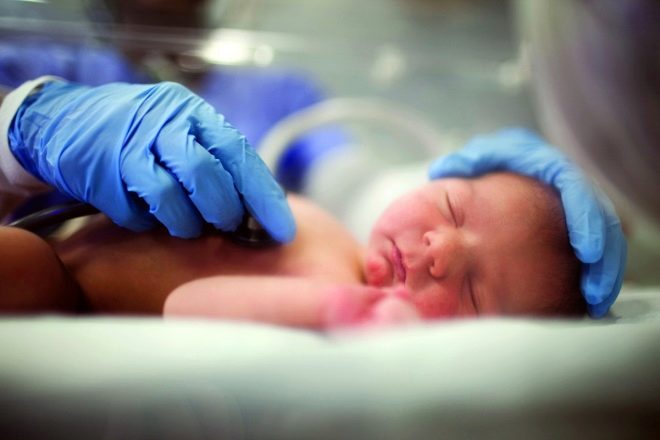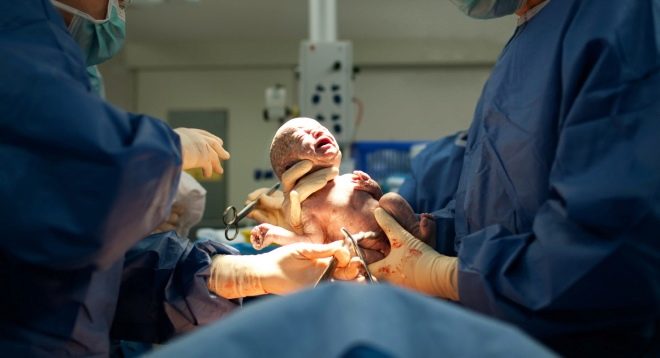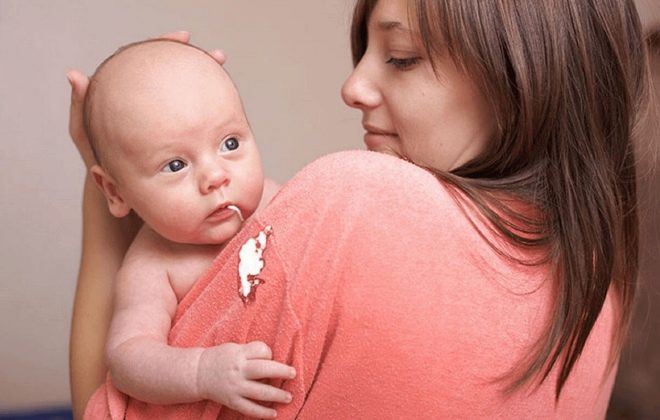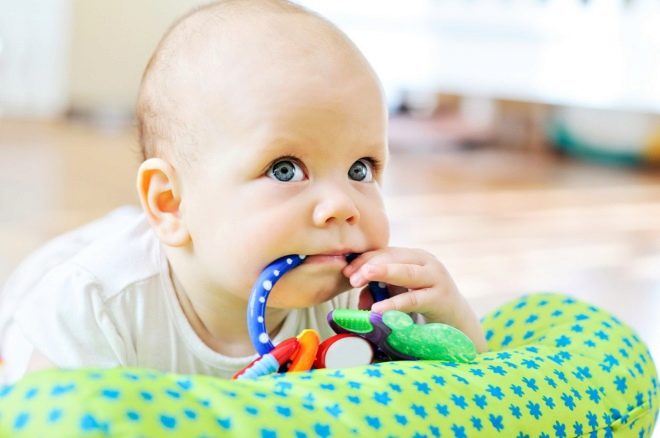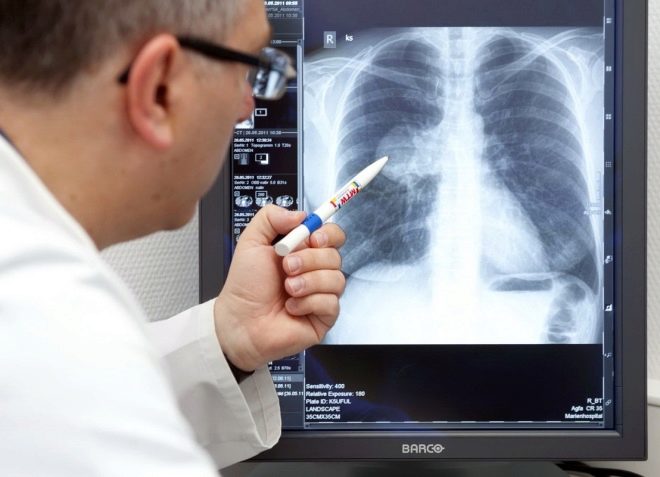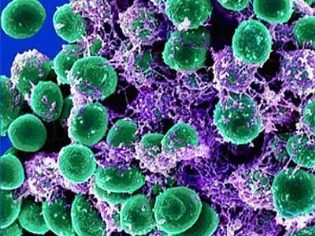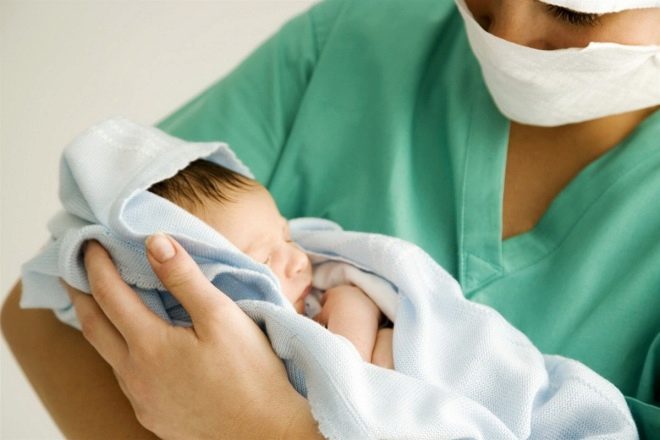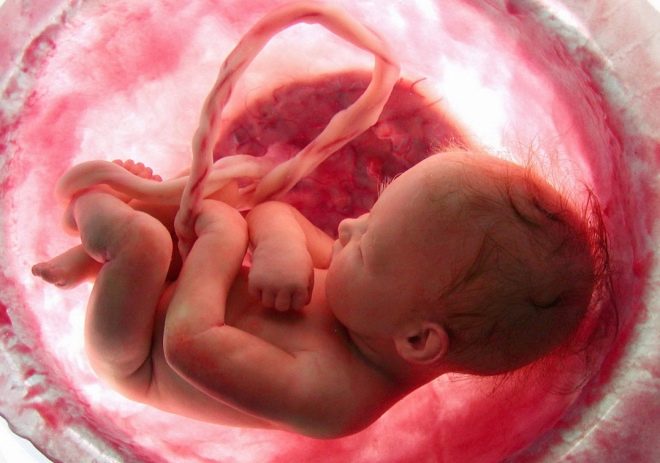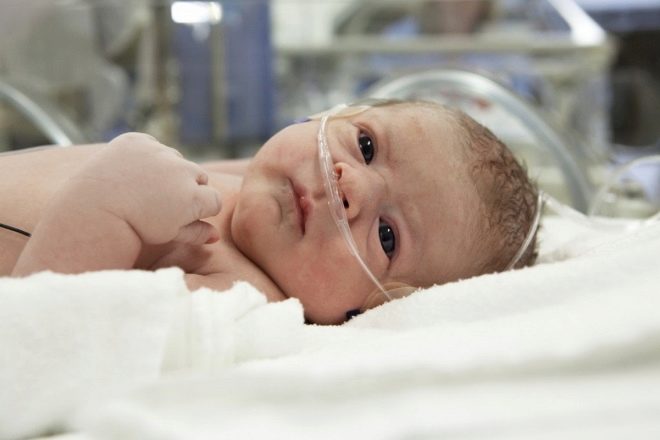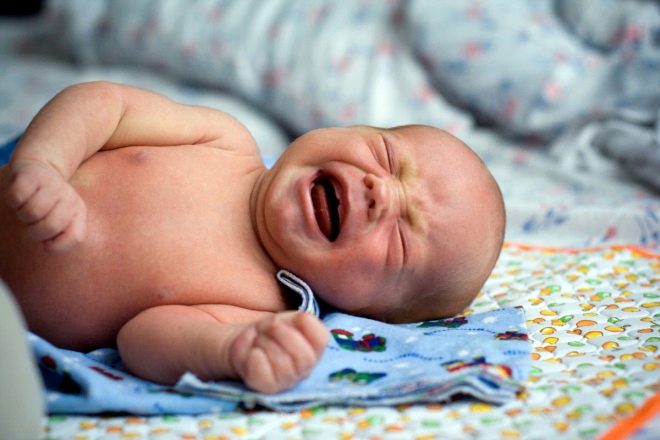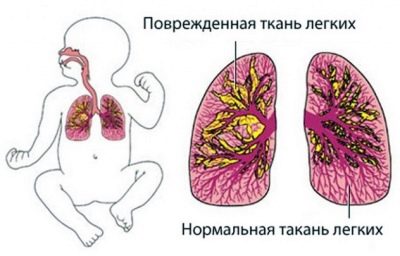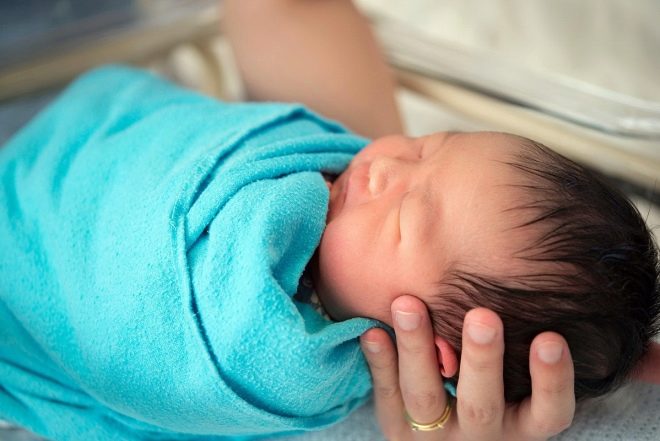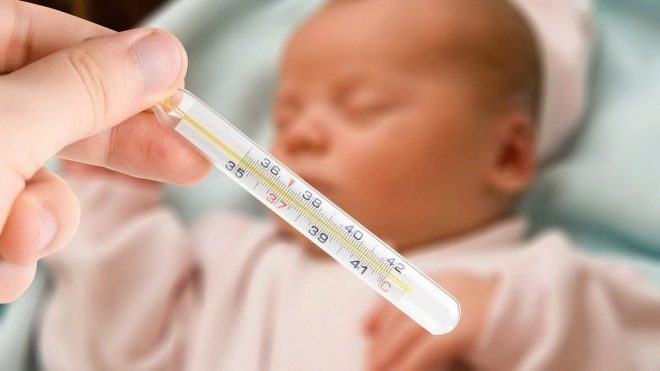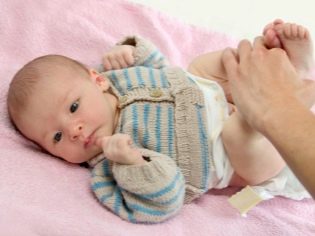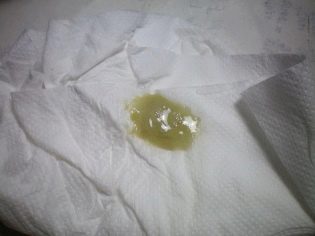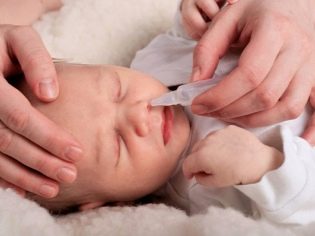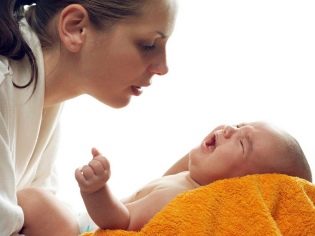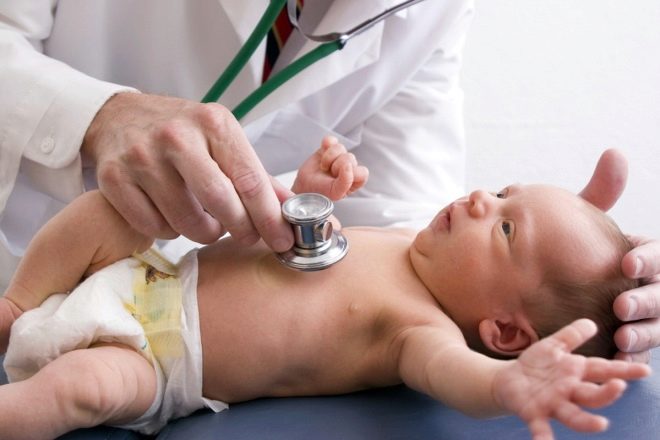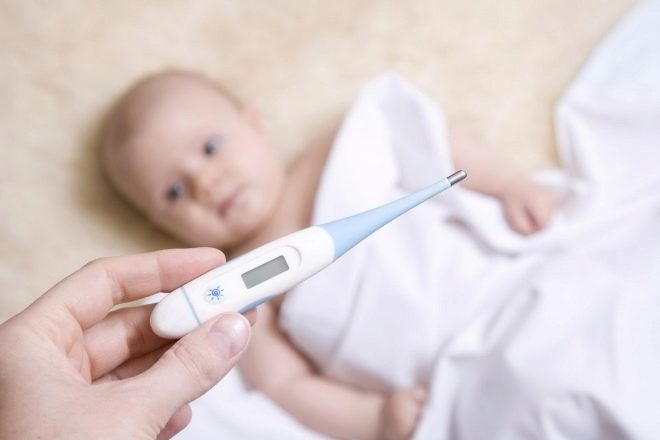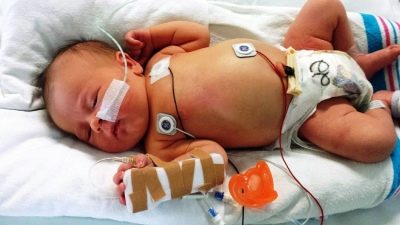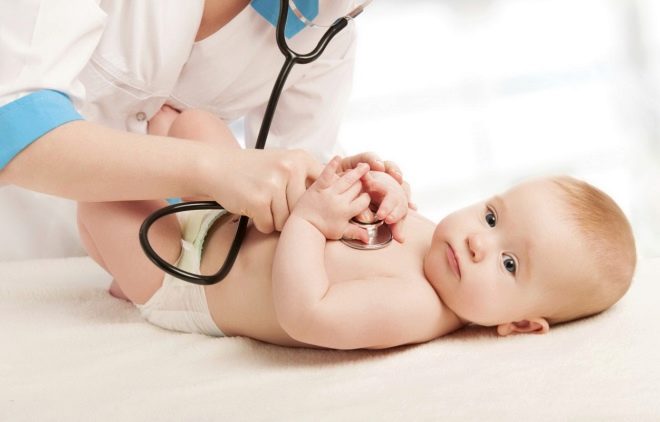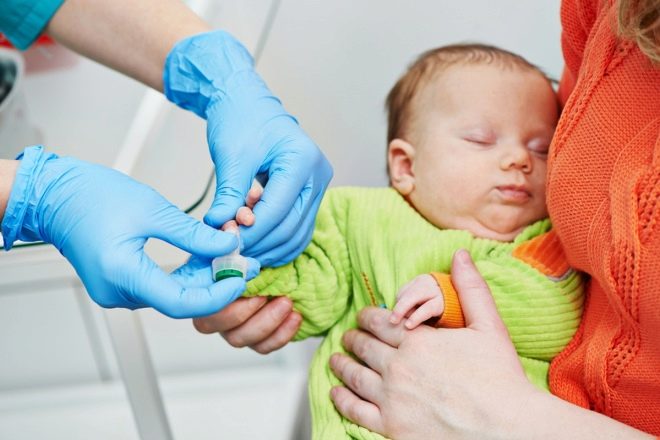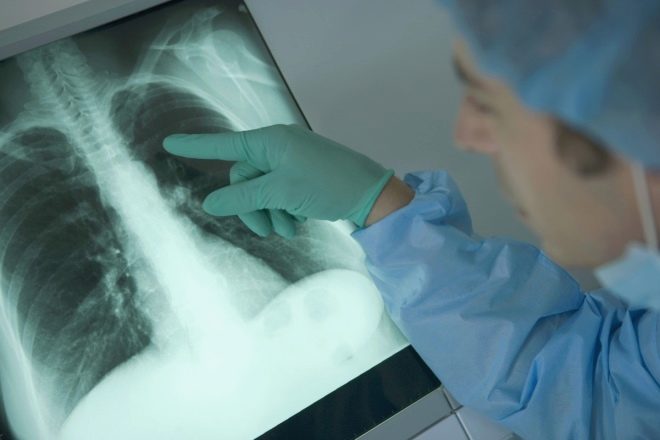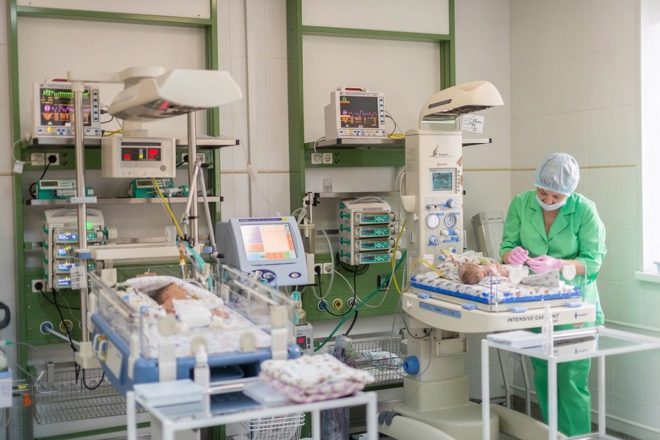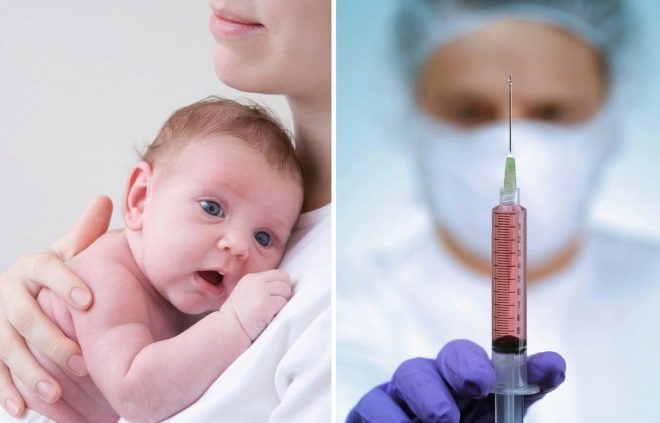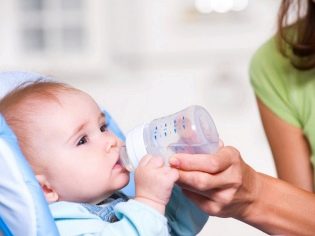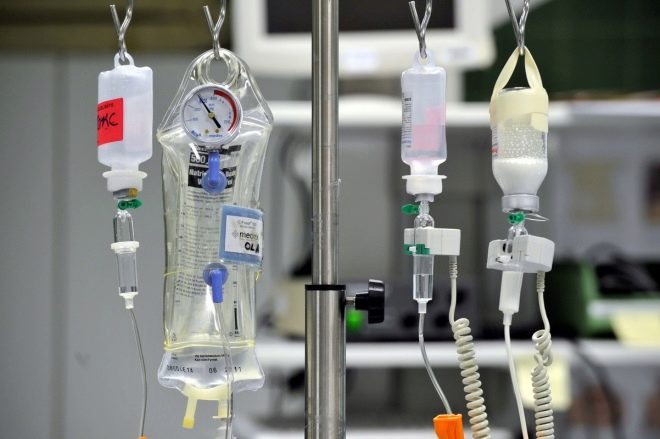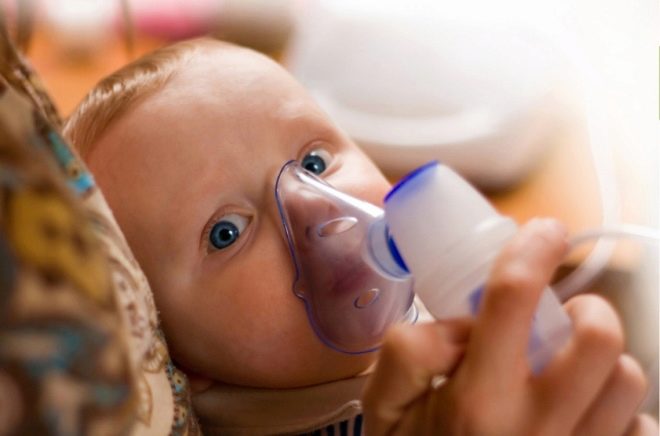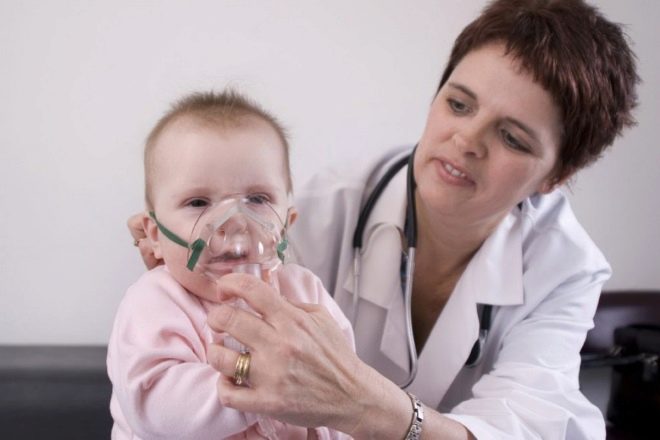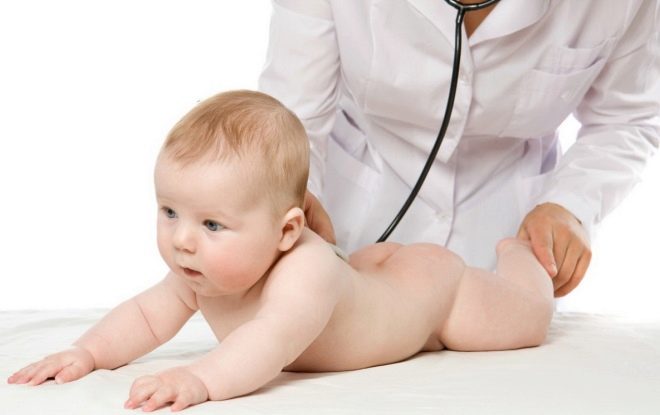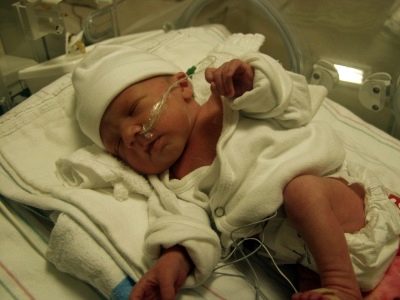Causes, treatment and effects of pneumonia in newborns
Inflammation of the lungs in babies in the first months of life is a very dangerous pathology. This suddenly developed pathological condition quite often leads to the development of adverse complications in a sick child. In this article we will talk about how pneumonia manifests in newborns, and discuss the features of its course.
What it is?
The inflammatory process that occurs in the lung tissue is called pneumonia. Any child can get it, regardless of age. Newborns and babies also have a chance "Catch" pneumonia. The development of pneumonia in them contributes to the influence of a variety of factors.
Pediatric doctors note that pneumonia quite often leads to an increase in neonatal mortality in babies in the first days of life. In some babies, the first adverse symptoms are detected immediately after birth. This situation is very unfavorable.
To eliminate such clinical signs of the disease, doctors almost from birth have to prescribe a massive antibiotic therapy regimen for babies.
The inflammatory process in the lungs is accompanied by multiple pathological changes. As a result of severe inflammation, the structure of the lung tissue changes. It becomes more loose and inflamed. A huge amount of white blood cells and other immune cells accumulate in the affected area of the lung. All these characteristic disorders lead to the development of adverse symptoms of pneumonia in a sick child.
The reasons
Pneumonia in newborn babies is caused by a wide variety of causal factors. According to statistics, a large proportion of diseases is congenital. In this case, the infection occurs already in the period of prenatal development of the baby. Mom, who becomes infected during pregnancy, transfers the pathogens to her unborn child through the common blood system of the placental arteries.
In the case of infected babies, the first symptoms of respiratory disorders characteristic of pneumonia occur already in the very first days after birth. It should be noted that congenital pneumonia occurs in both full-term babies and babies born before the appointed time.
Premature babies have a higher chance of developing this form of the disease. due to physiological features. Their immune system is still defective, which leads to easier infection by various microorganisms and their rapid reproduction in the children's body.
According to experts, children who have signs of malnutrition after birth also have a high risk of developing pneumonia. This deviation from the norm can develop in a child due to various disorders of intrauterine organogenesis. The prognosis of the disease in this case is conditionally favorable.
To eliminate all dangerous symptoms, a fairly intensive treatment regimen is required.
Complicated labor can also lead to the development of respiratory disorders in the child. Quite often it occurs after a cesarean section, which was carried out incorrectly or during its holding some complications occurred.Pathologies of pregnancy cause damage to the lungs and the respiratory tree in newborn babies. Any illness in the mother, accompanied by placental insufficiency, can also cause signs of congenital pneumonia in the newborn.
Another quite common clinical variant of pneumonia in pediatric practice is aspiration pneumonia. According to statistics, the peak of its development is in the first year of life. The development of aspiration leads to the ingress of acidic stomach contents into the respiratory tract. This situation usually occurs with frequent regurgitation of the baby after breast feeding.
The most dangerous for the development of such a pathological condition is the age of a baby from 3 to 10 months.
The entry of small foreign objects into the large bronchus can also lead to the development of respiratory disorders in the child. Usually such a situation occurs when parents do not closely monitor their baby. Dads and mothers should remember that babies in the first months of life should not be given toys consisting of small parts. Parents must necessarily pay attention on the labeling of children's products, on which the age of the baby is always possible.
The development of pulmonary pneumonia often lead to various infections. Bacterial flora is a frequent culprit in the development of pneumonia in newborns and infants. Staphylococci and streptococci are predominantly responsible for the disease. Anaerobic microorganisms cause pneumonia in babies of this age much less frequently.
Doctors note that congenital chlamydial or mycoplasmal infection leads to the development of neonatal pneumonia in the smallest patients. In this case, the child becomes infected from the mother in the period of intrauterine development. The course of these types of pneumonia is usually prolonged and is accompanied by the gradual appearance of adverse symptoms.
Baby infection can also occur. during childbirth, when the baby swallows the amniotic fluid. If they contain pathogenic microorganisms, then the baby can easily become infected, and then get sick. Such aspiratory pneumonia is rare in newborns. In some cases, infection can be at once several types of microorganisms - fungi, viruses and bacteria.
The cause of bacterial pneumonia in babies of this age often becomes pneumococci. Scientists have found that asymptomatic carriage of these microorganisms in newborn babies is 10-15%. Staphylococcus can colonize the mucous membranes of infants much more often - in 45% of cases.
The duration of the disease can be very different. It largely depends on where the infection came from in the children's body. Bacterial pneumonia in babies can occur for several weeks. Viral variants of the disease with a relatively not severe course usually pass in 10-15 days.
Adverse symptoms of fungal pneumonia in newborn babies may persist for several months.
The incidence of pneumonia in the smallest patients as a result of infection with a hemophilic rod increases annually. In some cases, there is a combined pneumococcal and hemophilic infection. Each year, the disease statistics changes and largely depends on the region of residence. Weakened children and babies with signs of congenital HIV infection have a higher chance of becoming ill with fungal inflammation of the lungs.
The spread of infection can be in different ways. Newborn babies most common hematogenous infection. In this case, pathogens enter the body of the baby through the blood.The intrauterine infection is also more often hematogenous.
Bronchogenic mechanism pneumonia develops in children older than three months. In this case, the primary cause of the development of pneumonia becomes bronchitis or inflammation that has arisen in the bronchial tree. The development of the inflammatory process leads to various viruses or bacteria.
Accompanied by this disease is not only the symptoms of pneumonia, but also the clinical signs of bronchitis.
Classification
There are several types of clinical variants of pneumonia in very young children. This classification allows doctors to make the correct diagnosis and prescribe the necessary treatment. The basis of the separation of clinical options is the root cause of the disease. Given this classification, pneumonia can be:
- Transplacental. In this case, the infection of the child occurs at the stage of intrauterine development.
- Antenatal. This clinical variant appears in babies mainly due to the ingestion of their amniotic fluid.
- Intenatal. Infection of the child occurs during its progress through the birth canal during childbirth.
- Postnatal. Infection of the child occurs after birth. This clinical variant occurs, as a rule, in the maternity hospital. Often lead to this nosocomial infections or violation of sanitary and hygienic regime by the medical workers of the maternity ward.
- Nosocodeal. Develops in children with various concomitant diseases of internal organs. According to statistics, this clinical option is found in babies born prematurely.
Inflammation can be on the one hand, or move to the second lung. Bilateral pneumonia, as a rule, occurs much more heavily in newborn babies and is accompanied by the appearance of various adverse symptoms. Right-sided process occurs in the overwhelming number of cases. This is due to the presence of certain functional features.
The right bronchus is usually shorter and wider than the left. This contributes to the fact that the pathogenic bacteria quite easily penetrate there and cause severe inflammation there.
Lung tissue in newborn babies is well supplied with blood and innervated. Pathogenic microorganisms, getting into the lungs, multiply rapidly and cause a violent inflammatory process. The spread of the process is usually rapid. Newborn babies often have common forms of pneumonia that spread immediately to several parts of the affected lung.
Symptoms
Inflammation of the lungs in babies is manifested a few days after birth. In some cases, adverse symptoms of the disease may develop in a child already in the first hours after his birth. More rarely, newborn babies become infected with bacterial or viral infections after discharge from the maternity hospital.
It should be noted that in the overwhelming number of cases, the course of the disease is quite severe and is accompanied by the appearance in the child of numerous adverse manifestations, which significantly worsen his general well-being.
The classic manifestation of pneumonia - pronounced intoxication syndrome. It manifests itself usually pronounced fever. With severe disease, it rises to 39-40 degrees. Against the background of such febrile, the child begins to shiver, he has a strong fever. To notice the appearance of these symptoms in the baby can parents themselves.
Much less frequently, pneumonia occurs without an increase in temperature. Usually this situation occurs when pneumonia was caused by "atypical" pathogens, which include mycoplasma or chlamydia.
A pronounced clinic with this course of the disease usually does not occur.To determine the disease in this case can only an experienced doctor with sufficient experience.
Increasing intoxication contributes to the fact that the child has the characteristic clinical signs:
- A sick child begins to attach poorly to the mother's breast, and may burp more often after breastfeeding.
- The baby's drowsiness increases significantly.
- Wants to sleep almost always.
- Severe disease is accompanied by loss of body weight.
- It becomes more apathetic and capricious. Emotional contact with the baby may be broken.
- Some kids, on the contrary, often ask for their hands.
- Severe intoxication in a child may also be accompanied by a change in his behavior. A sick child cries more often.
- During severe fever, the baby may have cramps.
In infants of the first days of life, non-specific signs also appear quite often:
- Stool impairment is one of the clearest manifestations of an infectious disease.
- The presence of inflammation in the bronchi is accompanied by the development of a child's cough. With a light flow, the baby can cough only a little. Cough is usually productive with sputum discharge.
- Selection color may be different. Bacterial pneumonia is accompanied by sputum of yellow or greenish color. Allocations from viral infections are usually light or have a gray tint. With severe disease, the amount of secreted sputum increases significantly.
With the development of the disease in a child increases the manifestation of intoxication symptoms. Severe inflammation contributes to increased heart rate and lower blood pressure. The skin of the baby pale, can become cold to the touch. In severe conditions, the nasolabial triangle area turns blue.
The appearance of shortness of breath in a sick child is an extremely unfavorable sign. This clinical symptom suggests that the child develops signs of respiratory failure.
If you have a suspicion of pneumonia or its complications, parents must show the baby to your doctor.
Pneumonia caused by adenoviruses is accompanied by the appearance of a bad cold. Discharge from the nose is usually mucous, may have a gray color. Abundant rhinitis significantly affects the well-being of the baby. Disturbed nasal breathing contributes to the fact that the child begins to breathe more often.
Effects
In order to prevent the development of dangerous complications, timely diagnosis and intensive treatment are necessary. If the therapy of pneumonia is carried out in a timely manner, the adverse effects of the disease can lead to the appearance of chronic lung diseases in the baby.
Bilateral pneumonia is often complicated by the development respiratory failure. This unpleasant condition is characterized by the appearance of persistent shortness of breath, as well as rapid heartbeat. At the child fast fatigability accrues and appetite significantly decreases.
It is possible to treat respiratory failure only in the hospital.
Low immunity in a baby in the neonatal period contributes to the spread of the inflammatory process throughout the lung tissue. Ultimately, this contributes to the formation of a purulent cavity, which is called an abscess. Pustules in the lungs are accompanied by a strong increase in temperature, the values of which reach 39.5–40 degrees. Treatment of abscesses in the lungs is carried out only surgically.
Systemic spread of microorganisms throughout the body from the primary focus can lead to extremely unfavorable pathology, which is called sepsis. This pathological condition is characterized by the presence of pustules in a variety of internal organs in the baby.
For the treatment of sepsis requires the appointment of intensive treatment, which is carried out in the intensive care unit.
The development of a bacterial infection leads to the fact that the child develops an infectious-toxic shock. This condition is the most dangerous, since with an unfavorable course it can even be fatal. This pathology manifests itself by a sharp decrease in blood pressure and pulse. The child’s consciousness is disturbed, in some cases he may even fall into a coma.
Prevent the development of adverse complications only through timely diagnosis. When the child has the first manifestations of respiratory failure, parents should immediately call the doctor’s home. To treat pneumonia in newborn babies at home is absolutely impossible. Disease therapy should be carried out only under the supervision of a pediatrician or pediatric pulmonologist.
Diagnostics
Clinical examination plays a very important role in the entire diagnostic complex of pneumonia. Only a truly experienced specialist can determine pneumonia in a child. The doctor should listen with the help of a phonendoscope for wheezing that appears in the chest during inflammation. Also during the clinical examination, the specialist will be able to identify all the hidden signs and manifestations of respiratory failure.
To determine the cause of the disease and the degree of severity, all the babies are given a complete blood count. The inflammatory process in the lungs is manifested increased white blood cells and increased ESR. These markers are very specific and vary in virtually all affected babies. Shifts in the leukocyte formula indicate the presence in the children's body of a viral or bacterial infection.
In some cases, additional biochemical studies are appointed to identify functional disorders that have developed during the course of the disease. Such tests can also determine complications and comorbidities.
Lung radiography requires very important medical indications. Absolutely all kids can not do this research, as it has a rather high radiation load. The need for the appointment of radiography of the lungs is determined by the attending physician.
Treatment
Therapy of pneumonia in newborn babies is carried out in a hospital. Usually, pneumonia is treated in 10-15 days. In more severe cases, the nature of the disease may be more protracted. All babies with severe pneumonia are hospitalized in intensive care for a course of intensive treatment.
Primary therapy includes compulsory the appointment of antibacterial drugs. In some cases, a combination of drugs is prescribed to achieve a more stable and pronounced positive result.
During treatment, neonatologists are required to monitor the therapy. For this purpose, individual criteria of general condition and blood test indicators are evaluated. Typically, such an assessment is carried out on the 2-3 day after the appointment of the drug regimen.
For the elimination of adverse symptoms used by various groups of antibacterial agents. Pediatric doctors prefer drugs having a fairly wide range of actions. Such means include: modern penicillins, cephalosporins of the latest generations, and aminoglycosides. The combination of drugs of these groups gives a more pronounced and prolonged effect, but can cause a large number of adverse side effects.
For the treatment of atypical pneumonia are prescribed mainly macrolides. Eliminating the adverse symptoms of chlamydial pneumonia will help «Azithromycin». The average course of therapy for such a clinical variant of pneumonia is usually 5 days.If the child is allergic to macrolides, antibiotics of other pharmacological groups are selected.
To eliminate the pronounced intoxication syndrome, the baby is given intensive therapy. parenteral solutions. For this, an isotonic solution of sodium chloride or glucose is injected into the child. In the acute period of the disease, doctors recommend additionally supplement the baby with boiled water.
To eliminate bacterial toxins from the body requires adequate fluid intake.
To comply with the drinking regimen, doctors recommend applying the baby to the breast more often.
Antipyretic drugs are used only when the body temperature rises above 38 degrees. Such anti-inflammatory drugs are also prescribed for severe disease and severe intoxication syndrome. The use of these drugs helps to reduce inflammation and normalize body temperature.
Improve metabolic rates allows appointment vitamins and trace elements. These drugs are prescribed in the form of solutions, which are administered mainly by the intravenous route. For an easier course of the disease, multivitamin complexes are prescribed for oral administration. Such drugs are especially indicated for premature babies with pronounced metabolic disturbances in the body.
Physiotherapy of pneumonia in newborn babies is carried out only according to strict indications. Methods are assigned as adjunctive therapy. ultrasound treatment, phono - and magnetic therapy. Typically, these types of medical care are used only after the acute period of the disease in the recovery period.
Physiotherapy methods can not only improve the performance of external respiration, but also help strengthen the immune system.
Surgical treatment is carried out only in limited situations. Usually surgery is necessary for the development of adverse complications in the lungs. Treatment of ulcers, which were formed during the severe course of pneumonia, is carried out by the method of surgical excision of damaged tissues. Usually, doctors try to limit the indications for surgery in newborn babies as much as possible.
With the development of a severe disease course, babies need intensive oxygen therapy. This method of treatment is to supply humidified oxygen. Usually, this therapy is carried out in the intensive care unit and resuscitation for all impaired children with signs of respiratory failure.
The appearance of severe shortness of breath on the background of lowering blood pressure is a very unfavorable symptom, which can be regarded as an indication for oxygen therapy.
After the treatment during the rehabilitation period, it is very important to continuously monitor and monitor the health of the baby. To do this, all newborn children who have had pneumonia are observed at the dispensary at the district pediatrician.
Timely inspection and consultation of babies allow you to identify dangerous complications of this terrible disease in the very early stages.
Any deterioration in the health of a child who has recently had pneumonia, should motivate parents to immediately contact the doctor with the baby.
A variety of methods are used to rehabilitate a child after an acute period of illness. Massage has a good effect.who is conducting a baby masseuse. Percussion effect on the chest contributes to a better discharge of sputum and improves the performance of external respiration. To achieve a positive effect, at least 10-12 procedures are necessary.
Therapeutic gymnastics is assigned to all babies.who have just had pneumonia. Doctors prescribe breathing exercises almost immediately after the normalization of body temperature.This measure is necessary, as it is necessary for the speedy improvement of the child’s well-being. The activation of the respiratory muscles occurs during the execution of a set of exercises.
This therapy allows you to eliminate all adverse symptoms that appeared during the development of the disease.
Forecast
With the timely appointment of treatment and quality diagnostics, the course of the disease is usually controlled. This means that the risk of developing dangerous complications of the disease is minimal. However, in premature babies or toddlers who have multiple defects in the structure of the internal organs, pneumonia can be quite difficult. The risk of developing infectious and toxic complications among them increases many times.
Even with a severe course of the disease, a child has a rather high chance of survival. In order to maximize the health of the baby, requires competent appointment of complex treatment. To conduct such therapy should only an experienced pediatrician or pulmonologist, who has the necessary knowledge and sufficient clinical experience in treating such diseases. In maternity hospitals, neonatologists are engaged in treating a congenital form of pneumonia.
Parents should remember that in no case should hesitate to contact the attending physician when the first signs of illness appear in their baby! Any breathing problems are significant pathologies for a newborn baby.
Later, the provision of medical care leads to the fact that the risk of possible complications of the disease increases several times. Monitoring the health of premature babies should be maximized.
Prevention
To prevent the development of pneumonia in a child should be during pregnancy. A woman planning to conceive must check that she has all the necessary vaccinations in our country. Such a simple measure is very effective in preventing the development of a variety of viral and bacterial infections.
The future mom should remember that during pregnancy whenever possible, any contact with febrile or sick people should be avoided. Reception of multivitamin complexes will help to maintain the optimal functioning of the immune system and prevent infection by many dangerous microorganisms.
After birth, the baby is very important point of prevention is the implementation of breastfeeding. Together with the mother's milk, the child receives all the necessary antibodies that protect his fragile organism from infection with various dangerous infections.
Prolonged breastfeeding allows for a good level of passive immunity, which will further lead to optimal functioning of the immune system.
Newborns, especially the first days of life, should not contact with a huge number of people. This usually occurs after discharge of the baby from the hospital. A huge number of relatives who come to “get acquainted” with a newborn baby can become a source of infection and infect the child with various types of infections.
The most dangerous such risk of infection in premature babies. Parents should limit their contacts and visits to relatives in the first weeks after birth.
During outbreaks of seasonal colds and respiratory diseases, parents must remember about compliance with the rules of personal prevention. Wearing a mask will help prevent the baby from becoming infected and reduce the likelihood of an intra-family outbreak of infection.
It is important to remember that the protective mask should be changed every 2-3 hours. Before you take the child in your arms, you should not forget to wash your hands thoroughly with soap and water.
All about the causes of pneumonia in children, see the following video.

